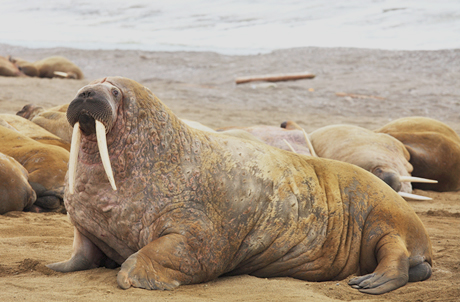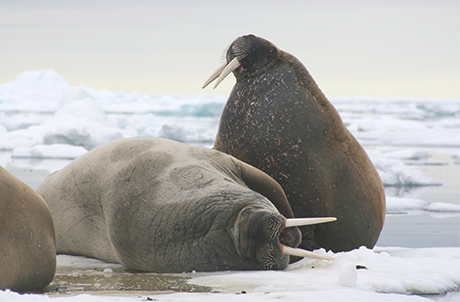Join our hands to conserve nature!
Odobenus rosmarus divergens
3.0-3.6 m
Male: up to 1,700 kg
Female: up to 1,250 kg
Walruses live in the Arctic and subarctic. This subspecies is found in marginal seas of the North Pacific and Arctic Ocean.

Odobenus rosmarus divergens
3.0-3.6 m
Male: up to 1,700 kg
Female: up to 1,250 kg



Walruses require sea ice for breeding and for reaching offshore feeding sites. As climate change reduces sea ice cover and alters its spatial and temporal patterns, walruses have come under threat. These animals are also highly sensitive to human disturbance. Activities such as trawl fishing can cause them to abandon sites.